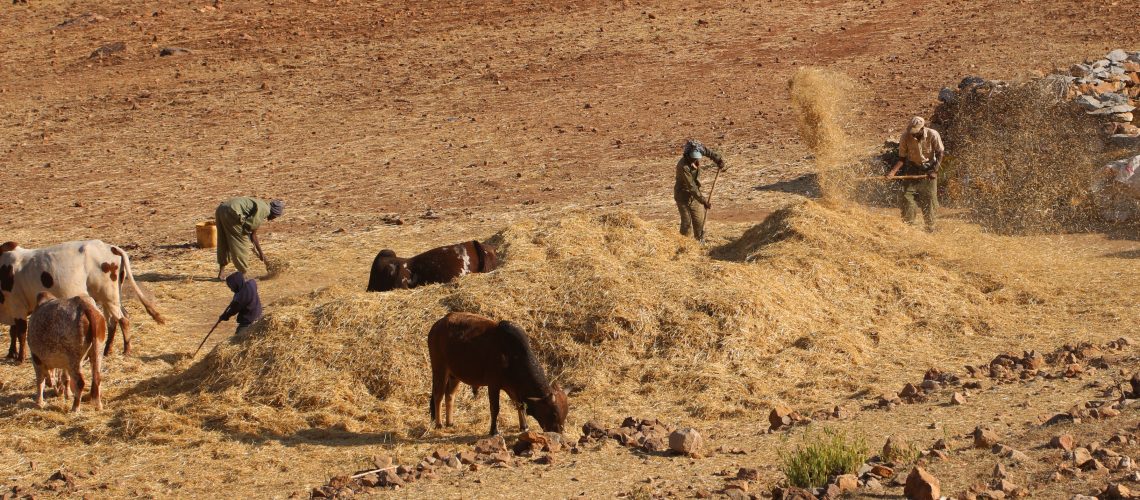Together with the effects of global warming and geopolitical conflict, the limited water resources and rugged terrain of the Horn of Africa pose grave threats to the region’s peace and prosperity. The disputes over international borders and the continuation of conflict exacerbate the situation. We need a systemic approach that takes into account the intricate interplay of history, politics, and geography to solve these issues.
The Horn of Africa faces significant obstacles to meaningful and lasting peace and prosperity, many of which are related to geography. The region is located in the northeast tip of the continent and is comprised of Djibouti, Eritrea, Ethiopia, and Somalia, in addition to portions of Kenya, Sudan, South Sudan, and Uganda. The region’s arid and semi-arid climates, limited access to water, rugged terrain, and ongoing boundary disputes have posed challenges in developing robust infrastructure and fostering economic opportunities. These difficulties have been compounded by violent internal armed conflicts and the increasing impact of climate change. In this regard, considering the interplay of international powers coupled with an understanding of the region’s geographic features can provide insights and pave the way for effectively addressing these multiple challenges.
Over the past twenty years, the frequency and intensity of droughts have increased due to global warming, resulting in severe impacts on areas that were once self-sufficient in terms of resources for grazing, crops, and water resources. Countries in the region are grappling with the effects of climate change, including a severe drought that has displaced more than two million people, killed millions of cattle and left tens of thousands of children malnourished. Unfortunately, global discourses have normalized recurring droughts as a natural phenomenon, rather than acknowledging them to be a result of human intervention in developed countries. As a result, countries in the region have not received compensation for the losses and damage they have suffered from industrial activities and carbon emissions, including from the US and Chinese industries, the top two global economic powerhouses. In addition, the countries of the region are vulnerable in terms of technologies for mitigation and adaptation strategies, which exacerbates the impacts of climate change.
In addition to the impact of climate change, the Horn of Africa is a region that has been shaped by the legacy of colonialism and is currently experiencing complex geopolitical dynamics. The division of Africa by European colonizers has had a lasting impact on the continent, with international borders between African countries designed haphazardly and without consideration for pre-existing socio-economic, historical and political dynamics, as well as geographic characteristics (1). This has contributed to many violent conflicts across international borders in Africa, including the recent bloody war between Ethiopia and Eritrea (2).
Moreover, the geopolitical and geostrategic importance of the Horn of Africa as a maritime gateway between the Euro-Mediterranean region, the Middle East, East Africa, and the Indian Ocean cannot be overstated. The area has become a magnet for various countries, including China and the US, which have already established military and naval bases in Djibouti. This has intensified competition between the international rival powers for control of the region; in addition to the competition over Djibouti, Russia and Turkey are also trying to gain a foothold in Sudan and Somalia respectively (3).

Furthermore, Middle Eastern countries have been projecting their power into the region, supporting various insurgents and, in some situations, government forces against opposition groups. For instance, the UAE provided drones to the Ethiopian government for its military campaign in the Tigray region, leading to the destruction of civilian facilities and the deaths of civilians.
Despite numerous challenges, the Horn of Africa has enormous potential for renewable energy due to its geographic location, particularly in terms of solar, geothermal and wind resources. The region’s tropical climate, abundant solar radiation, and geothermal potential in the Rift Valley area provide a firm basis for the use of renewable energy. To capitalize on this geographical advantage, however, systemic obstacles must be overcome. The renewable energy landscape is dominated by Western and Chinese corporations, which marginalizes local industries and consequently overlooks the region’s unique perspectives on climate change discourse and policymaking. Therefore, it is essential to foster equal cooperation, promote mutual learning, and facilitate technology transfer. In this way, the region can utilize its geographical advantages to actively engage in the development of renewable energy, reduce its reliance on fossil fuels, establish resilience, and address climate-related inequalities.
In conclusion, the geography of the Horn of Africa presents significant opportunities and challenges to peace and prosperity, with the effects of global warming and climate change exacerbating these challenges. Geographical thinking can help to identify and predict the time and place of these challenges and development potentials in the respective region. The starting point of our intervention could be to recognize the human impact on the natural environment and take action to address the negative impacts of industrial activities and carbon emissions on the countries of the Horn of Africa. Given the region’s location in the tropical zone and its renewable energy potential, it is crucial to promote sustainable development. A strategic approach would be to foster partnerships that actively involve regional private enterprises in leadership positions. By engaging private sector entities in facilitating the transition to green energies, significant economic development opportunities can be created while concurrently increasing climate change resilience and mitigating its negative effects. This collaborative strategy would utilize the region’s renewable energy resources, such as solar and wind power, paving the way for a more sustainable and eco-friendly future. Moreover, addressing the geopolitical and geostrategic competition in the region and the legacy of colonialism will require a comprehensive approach that considers the complex historical, political, and geographic dynamics at play.
Samuel Zewdie Hagos
References
- Herbst, J., “The Creation and Maintenance of National Boundaries in Africa”. International Organization, 1989.
- Abbink, J., “Ethiopia−Eritrea: Proxy wars and prospects of peace in the horn of Africa”. Journal of Contemporary African Studies, 2003.
- van den Berg, W. and Meester, J., “Turkey in the Horn of Africa: Between the Ankara Consensus and the Gulf Crisis”, Clingendael: Netherlands Institute of International Relations, 2019.




